When I joined the Army I trained initially as a Radio Op with the R A Corps of Sigs but on completion of my 13 week OKR course I was posted to the transport section at Balcombe as ‘they’ told me there was a shortage of OKR postings at the time and the fact that I already held a civvy truck licence had nothing to do with it. In my way of thinking it was a bit silly to be a qualified radio jock and drive a truck so I applied for a Corps Transfer to RAASC (Transport Corps) and eventually found myself at 86 Tpt Platoon RAASC stationed in Bandianna for a while. In those days 86 Platoon was equipped with Studebakers and the odd GMC 2 ½ tonners, but these were later replaced by the brand new (to us) Mk3 Internationals.
We were given a pretty free hand to learn about all their capabilities and foibles whilst "playing in the mud" on the tank test tracks at Bandianna and although the old vehicles were still pretty capable pieces of machinery, these new machines, in my eyes, simply blew the old ones right off the map.
By Mid 1964 I was posted to a previously unheard of Unit called 6 Tropical Trials Unit, ……, would you believe, as a Radio Op.
My vehicle- callsign 22. A brand spanking new S2a FFR - fitted with C11 R210 and a B45 set, (one to talk to Armour and one to talk to everyone else) Back in those days I was fit enough to climb up and attach antennas to tall trees!
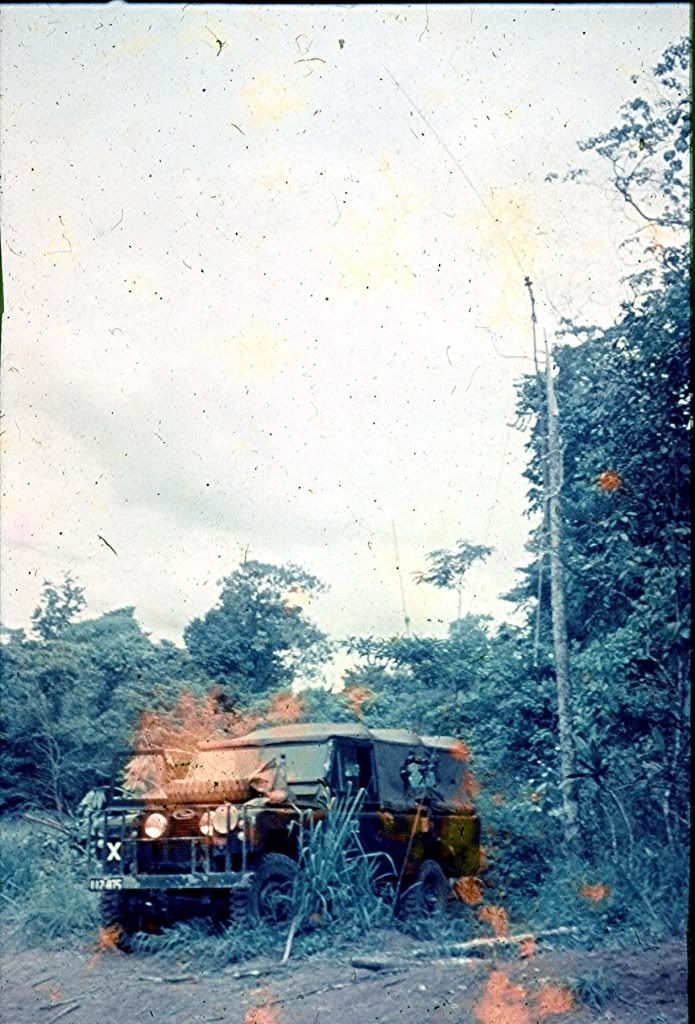
Sorry about the quality of the shots but our climate isn't really the friendliest towards old slides.
6 Tropical Trials Unit was originally based at Trials and Proving Wing, Monegeeta just out of Melbourne and was the home of many mystical things both old and new. Older style vehicles were running around test tracks accompanied by new versions of the same type in evaluation trials, round and round until something failed, then it was stop, fill out the relevant paper work, wait for the boffins to take their photographs of the failure, a repair to be made, then round and round again. There were ‘off road’ tracks, concrete and bitumen surfaces, graded hill climbs, mud sections, sand sections and concrete corrugation sections and every half hour there were about 96 or so readings to be taken off the “Jesus box”that was wired to every conceivable measurable part of the vehicle and written down. This went on for a number of weeks in which I suspect we were not only being used as cheap labour, but were actually being introduced to all these new fangled vehicles. Eventually we packed up the whole lot, formed a convoy and headed off from freezing Victoria through Western NSW and Qld to sunny Innisfail in FNQ.

The vehicles we had on test this particular year were the new prototype 6x6 5 ton cargo truck (towing a Dog trailer) and the tipper version which was fitted with 10.00x20 dual rear axles and permanently loaded with a 5 ton payload that was weighed once a week and towing a 5.5" artillery piece. Both these vehicles had the standard Mk3 cab fitted, were powered by a stock standard AGD282 gold star International motor, through a 5 speed box.

Also on trial was a 4x4 1 ton Land Rover 2B Cab over engine, powered by a 6 cylinder Rover engine,
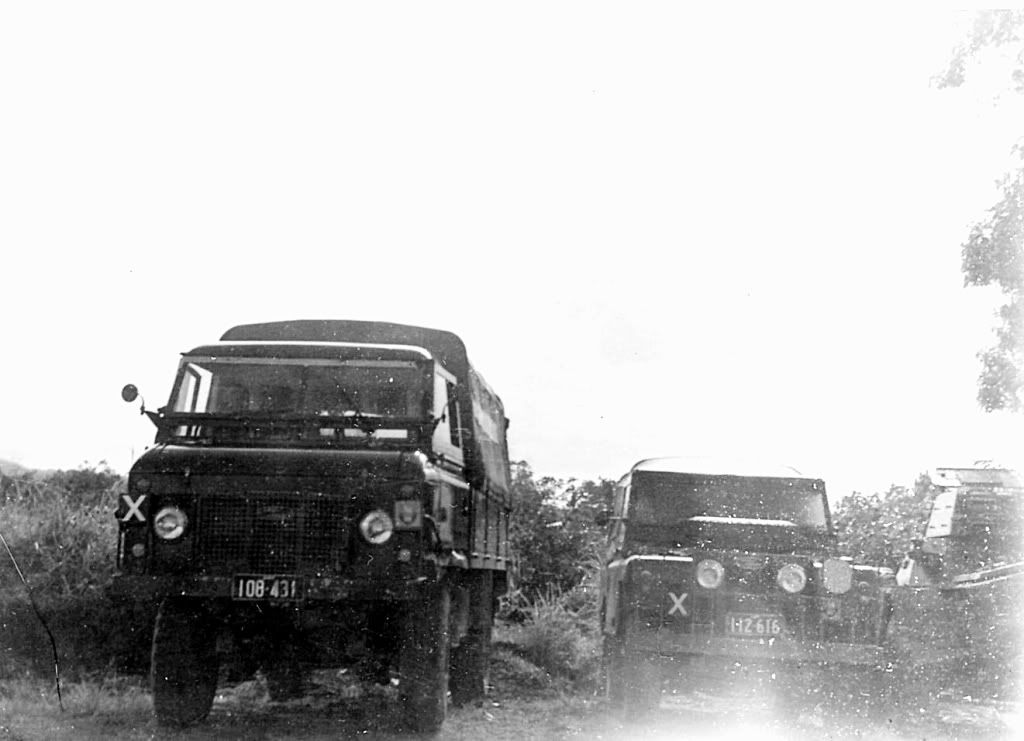
a ¾ ton Land Rover Recovery vehicle,
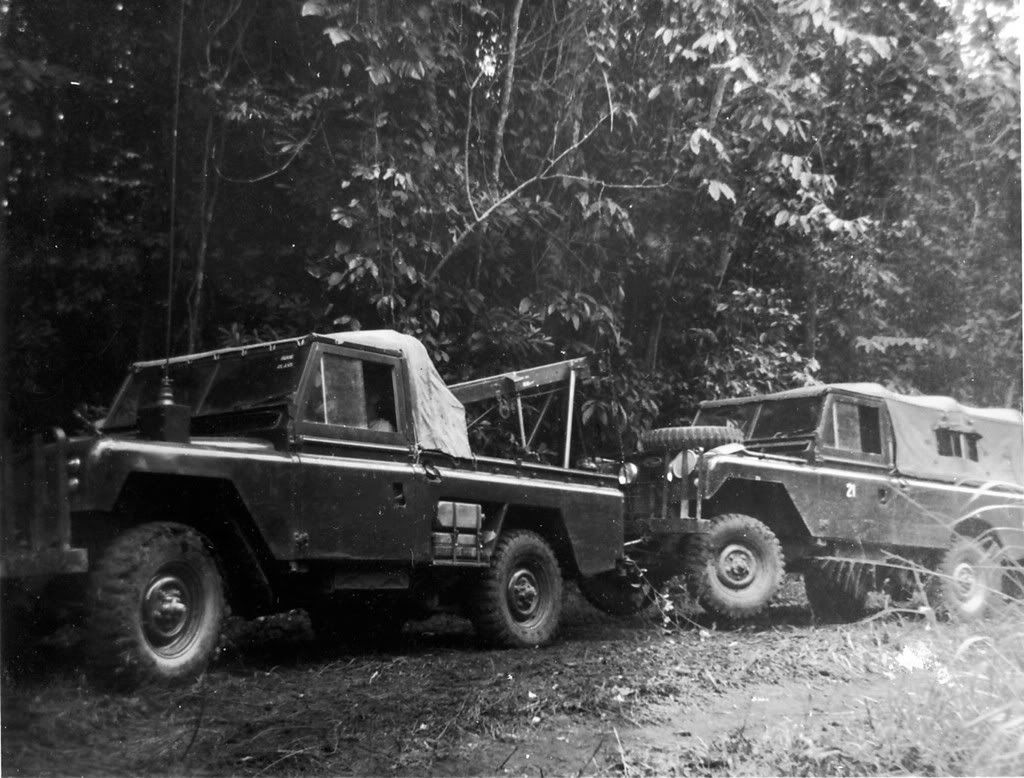
as well as two armoured reconnaissance vehicles, the M113 and the FMC vehicle that we called a 113½. Both these latter vehicles were running comparator trials against the Rolls Royce Ferret that was currently in service in the Army at the time.
M114 at our base in Innisfail (Used to be Gtrasso's garage.)
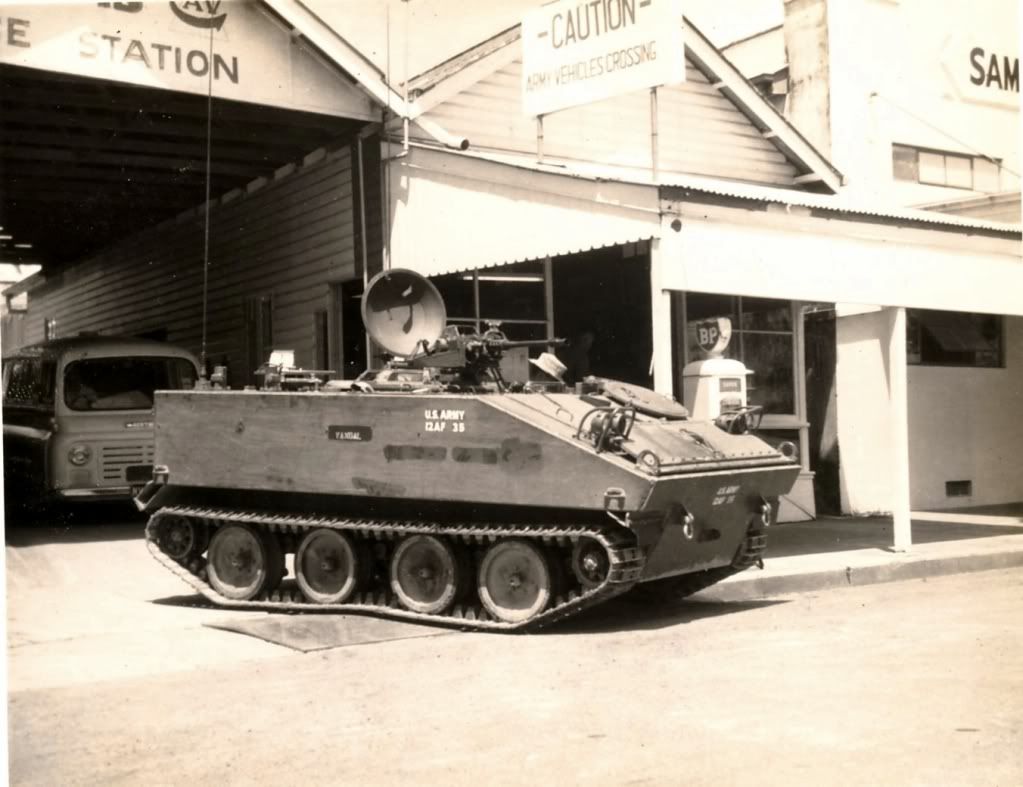
M114 at speed in the mud
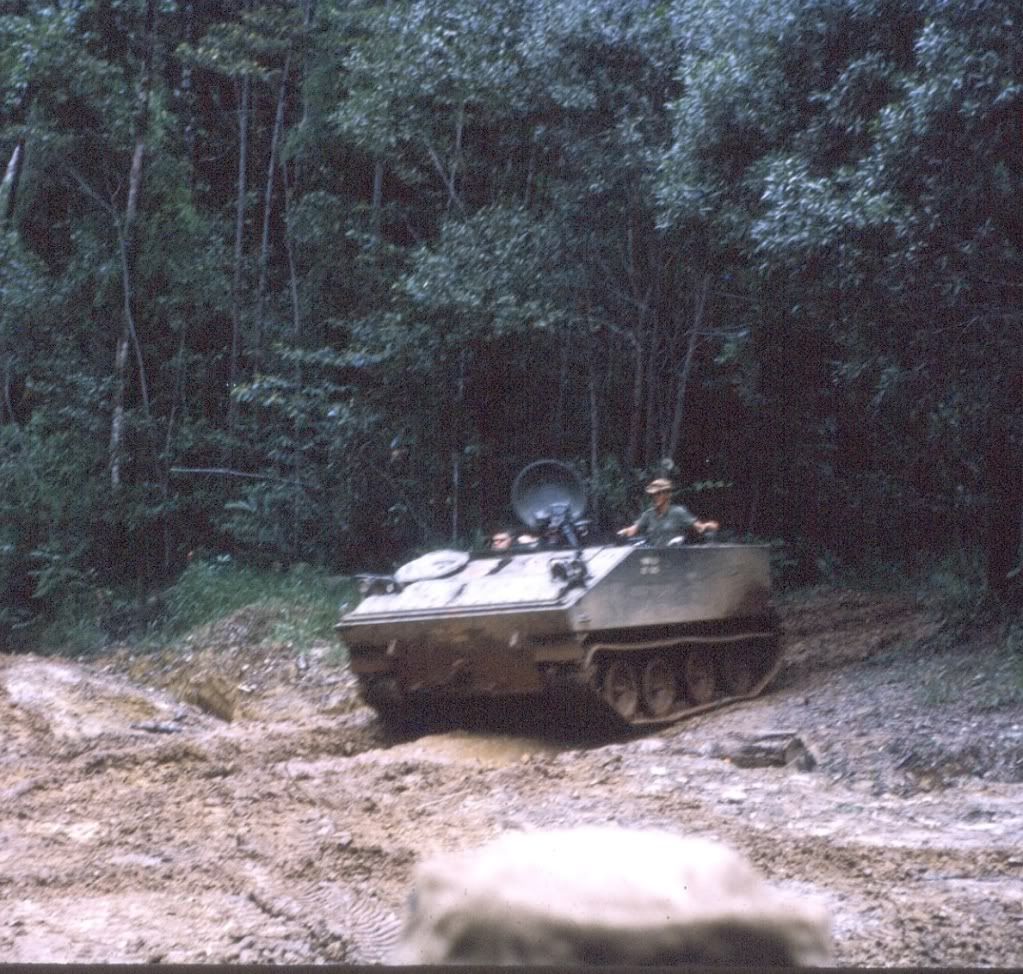
Doing a vertical drop test (back breaker)
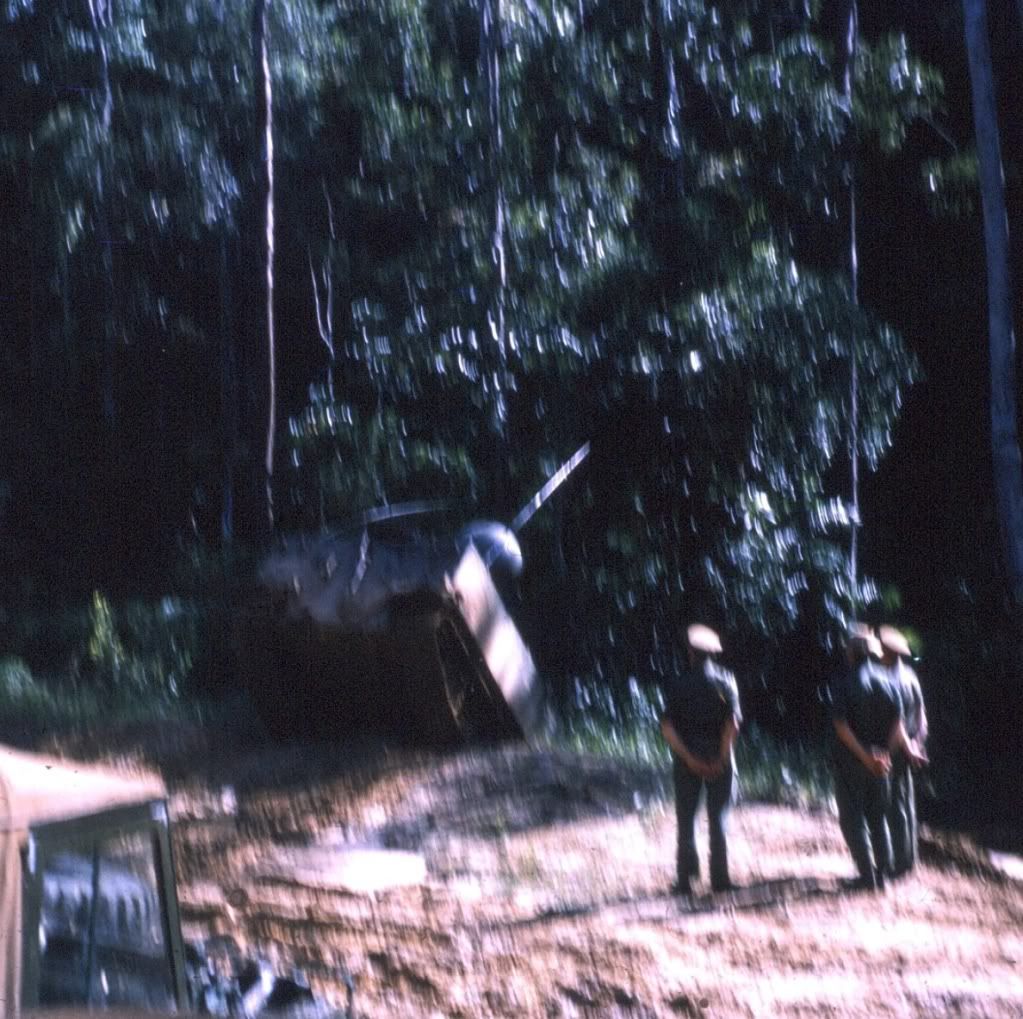
FOOD Manufacturing Corp's test vehicle

FMC on bridge
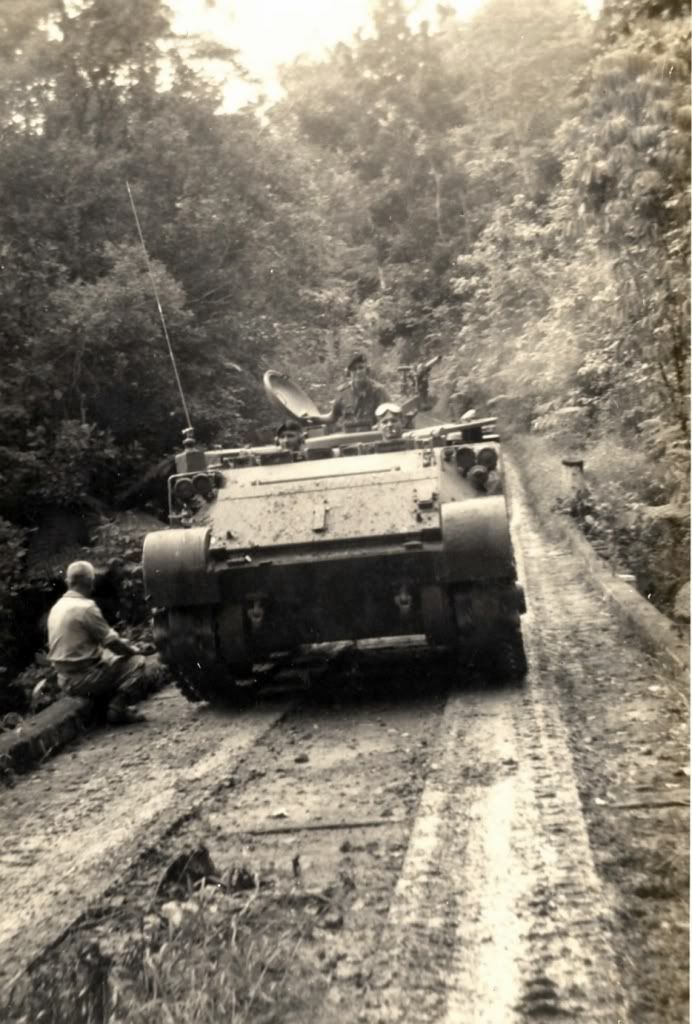
Ferret leading M113 through creek
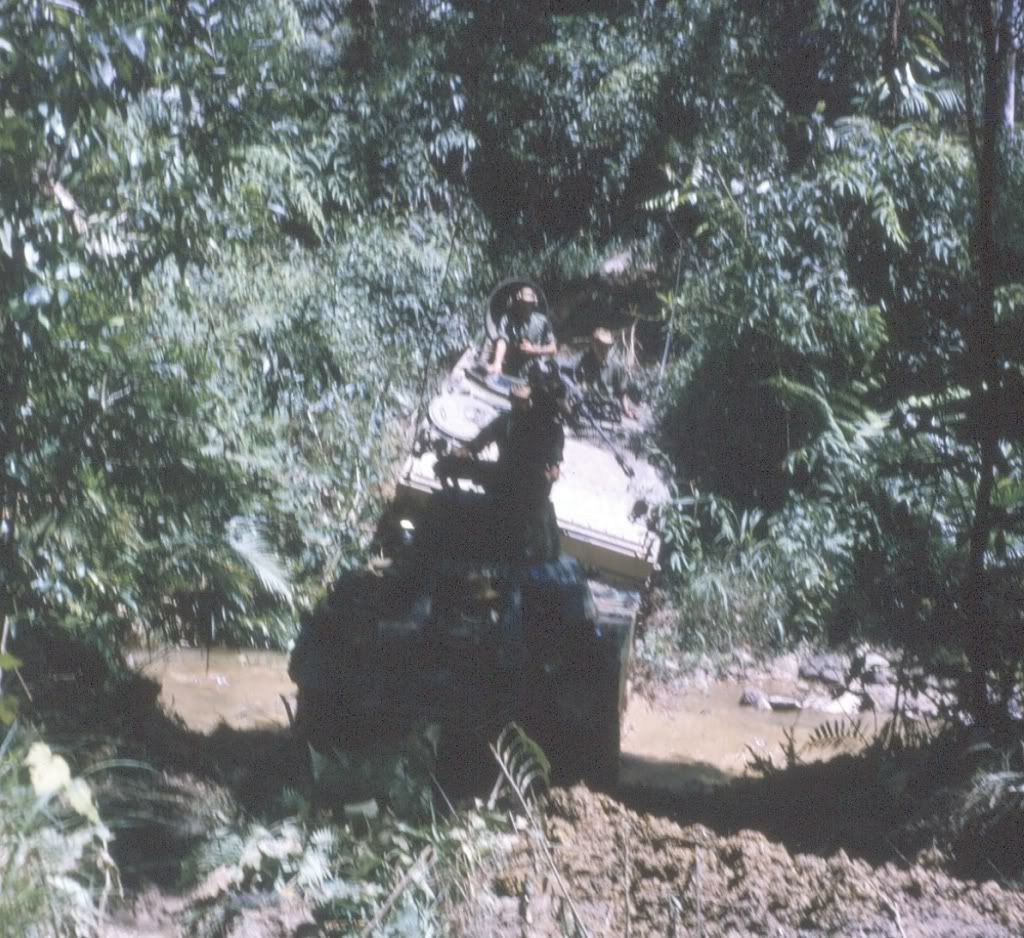
Ferret parked in town next to Bosses Staff Car.
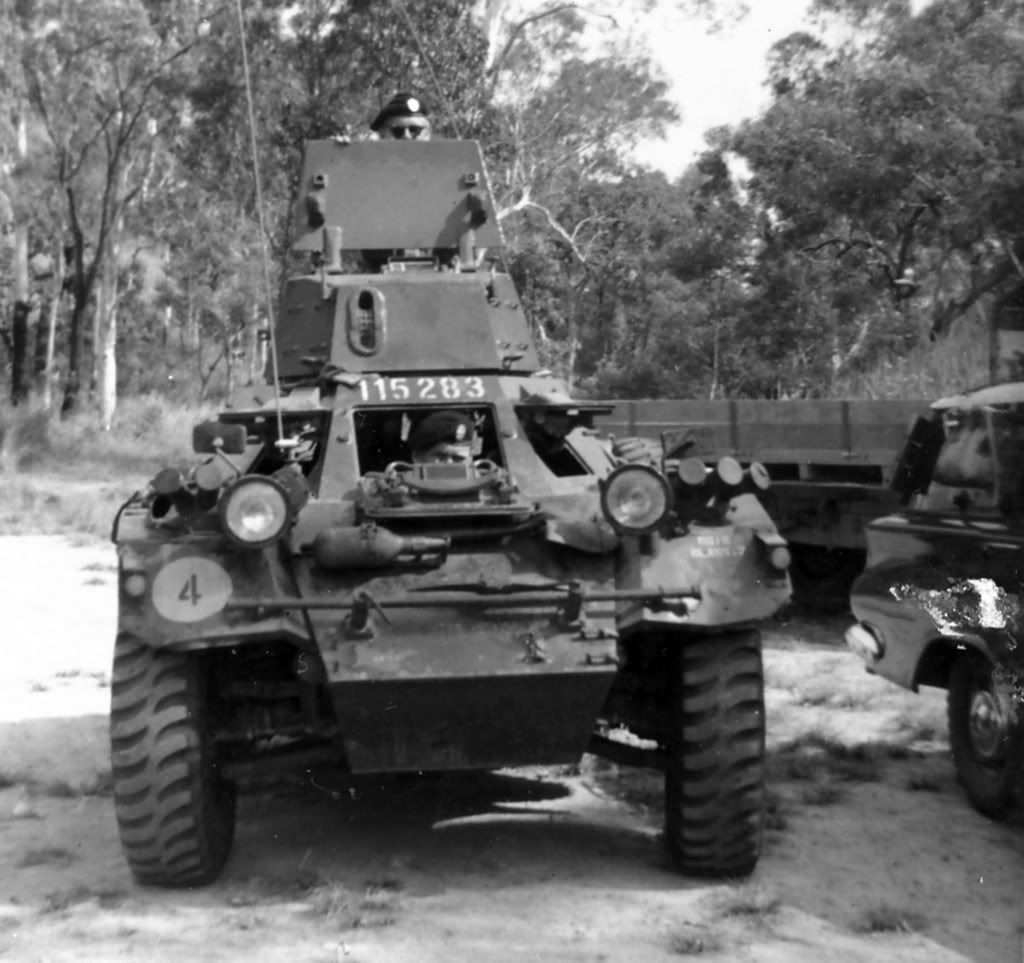
Of all the tested vehicles the only ones to gain real acceptance were the 6x6s, the Rover wrecker never went into any great production although a couple of versions were made later, the 2B COE had a lot of trouble keeping on its wheels. Its narrow track was absolutely useless in sloppy country as it was too tall and when following a truck or tracked vehicle, it simply lay on its side. Its gearing was also ridiculous as the lowest gear I ever used was third gear in either range regardless of the incline.
Both tracked vehicles were eventually overlooked in preference for the newer M114 Armoured personnel carrier which could do the same job just as capably and had the added bonus of being able to transport troops as well. This thinking of a general purpose vehicle rather than a specific Command Reconnaissance vehicle carried over to the Land Rover as well as just after this we ceased buying short base 88”vehicles and concentrated on 109s. The Tropical Trials unit had a variety of test tracks laid out, some were raw jungle and a track was initially cut through using the carriers, then smoothed out by the trucks and eventually followed by everything else until a track was worn in. The biggest problem apart from navigation was the Loya vine (wait-a-while) that hung from the trees and tore canopies of trucks and land Rovers like paper. They also latched on to a M113 driver’s cheek and lifted him clear of the carrier in one instance. The main jungle track was around the Mena Creek area and another was situated where the Madura Tea Plantation is today.
This vehicle unsuspectingly attempted to cross what appeared to be a shallow water crossing but due to the alarming clarity of the water it was badly misjudged. Note the waterline on the vehicle attained before it hastily backed out. These vehicles were amphibious but required closing down before they swam..
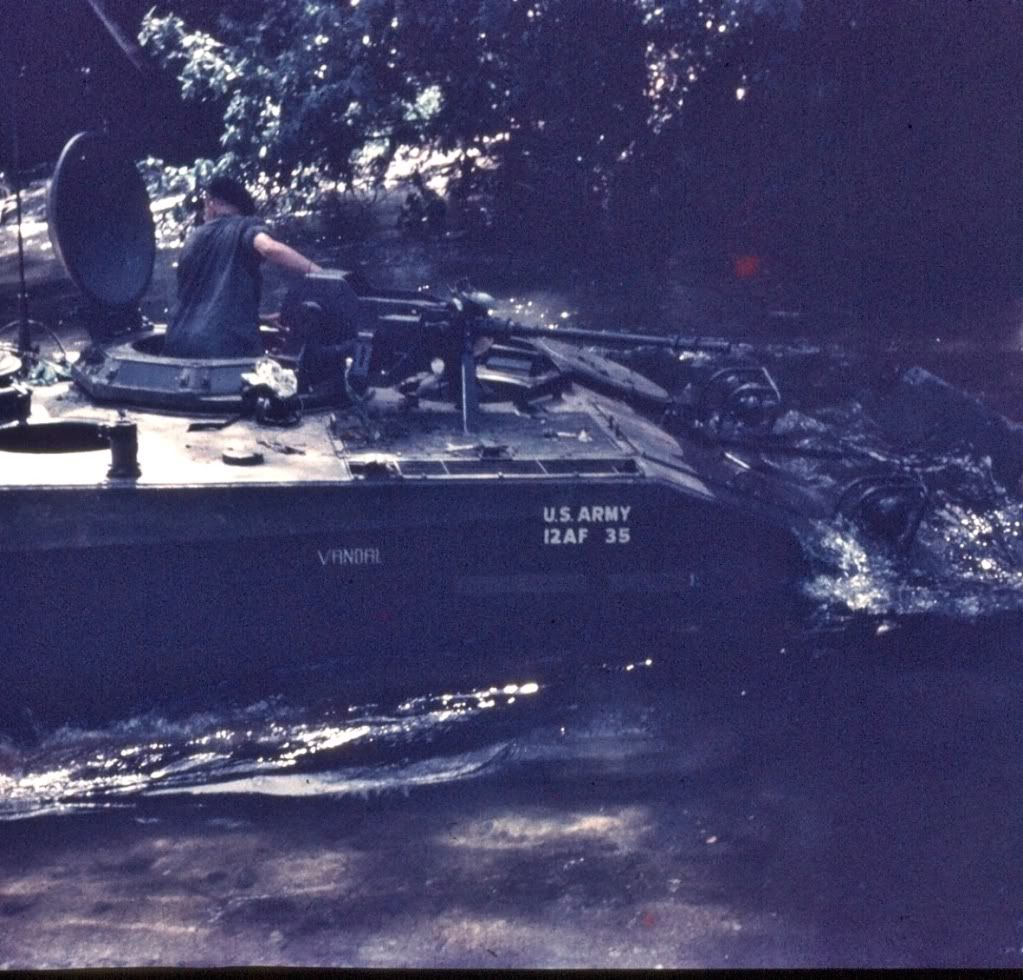
The very coarse sand of the Beach track was at Cowley Beach (where the Tropical Trials Unit situated its Headquarters in later years) and a swamp track was set up in and around the Eubanangie Swamp.
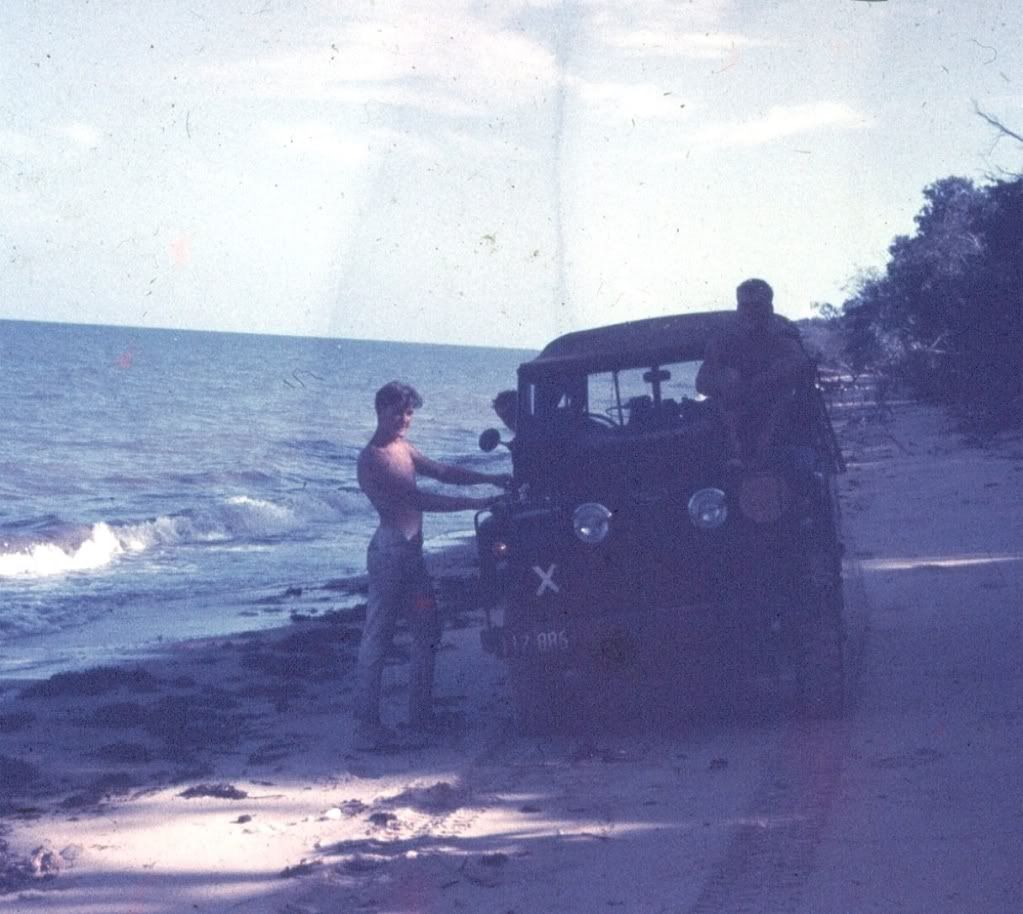
I may have doubled up on some of the shots I posted on another site but I have tried to put some fresh ones in to alleviate the boredom.
Regards
Glen